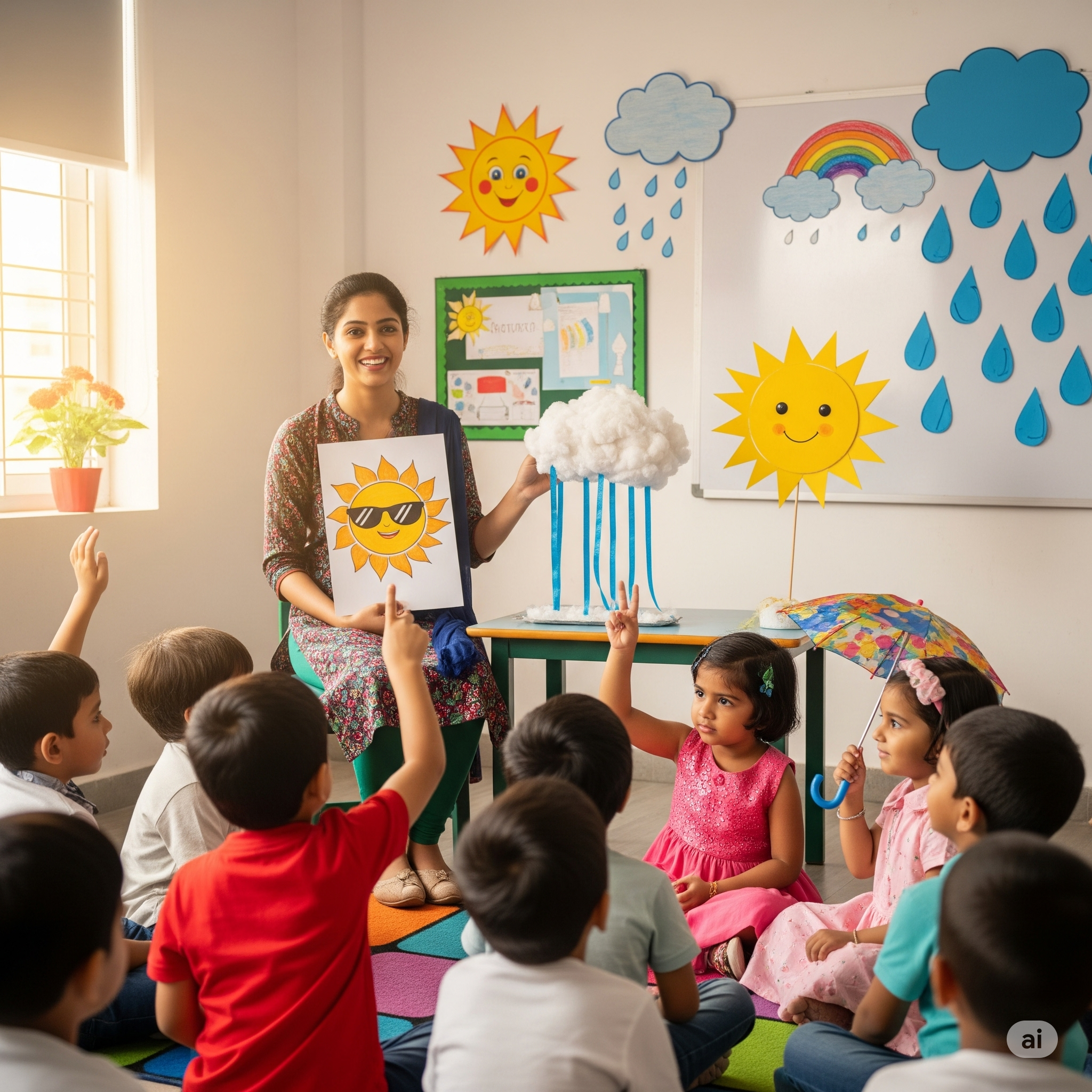Understanding the world around them is a key part of a preschooler’s development. One of the most exciting and relatable topics you can introduce in early childhood education is weather. From jumping in puddles on a rainy day to feeling the warmth of the sun, children are already experiencing weather every day—it’s just a matter of helping them understand it.
At the preschool level, weather education isn’t about memorizing complex terms or reading climate charts. It’s about making connections, building vocabulary, and sparking curiosity. Here’s how to teach preschoolers about weather in fun, interactive, and memorable ways.
Start with Observation
One of the simplest ways to begin is by starting each day with a weather check-in. Take the children outside or have them look through a window. Ask questions like:
- “What does the sky look like today?”
- “Do you feel warm or cold?”
- “Is it windy?”
Encourage them to share what they see and feel. This daily practice helps children become more observant and aware of changes in their environment.
Create a Weather Calendar
A weather calendar is a fantastic way to track and learn. Each day, let one child take the role of “Weather Reporter” and record the day’s weather using symbols or drawings—sun, cloud, rain, or wind.
This activity builds routine, strengthens pattern recognition, and encourages children to understand that weather can change daily.
Use Visual and Sensory Activities
Children learn best through hands-on experiences. Try these fun activities:
- Rain in a Jar: Use shaving cream and blue food colouring to simulate rainfall in a clear jar. It’s a magical way to show how rain falls from clouds.
- Cloud Dough: Mix flour and oil to create a soft dough that resembles clouds. Use it during “cloudy day” lessons.
- Wind Painting: Give kids lightweight materials like feathers or paper, and let them blow them across the table or paint using straws. This helps them “feel” the wind in action.
These tactile experiences deepen their understanding and keep them engaged.

Dress the Weather Game
Turn a corner of your classroom into a pretend “weather closet” with hats, scarves, sunglasses, raincoats, and boots. Call out different weather types and let children pick what they would wear. For example:
- “It’s raining today! What do you need to wear?”
- “It’s hot and sunny. What should you put on?”
This game teaches practical life skills, decision-making, and helps reinforce vocabulary associated with weather and clothing.
Story Time with Weather Themes
Books are powerful tools to introduce and reinforce weather concepts. A few great reads include:
- The Snowy Day by Ezra Jack Keats
- Cloudy With a Chance of Meatballs by Judi Barrett
- Come On, Rain! by Karen Hesse
- Weather by Jill McDonald (from the “Hello, World!” series)
After reading, ask open-ended questions or have kids draw scenes from the story. Connecting stories to real-world concepts deepens comprehension and keeps the topic relevant.
Sing Songs and Rhymes
Songs are perfect for preschool learners. Add some weather-themed tunes to your classroom playlist:
- “You Are My Sunshine”
- “It’s Raining, It’s Pouring”
- “Rain, Rain, Go Away”
- “Mr. Sun”
Add actions or props like an umbrella or sunglasses to make it even more interactive and fun.
Weather Science for the Curious Minds
Even young learners can grasp basic science when it’s presented playfully. Try these simple experiments:
- Make a Wind Sock: Use streamers and paper to make a sock that moves with the wind.
- Evaporation Station: Leave out cups of water and mark the water level over a few days. Watch as it “disappears.”
- Rainbow Hunt: After a rainy day, go outside and look for rainbows. Talk about light and water making colors in the sky.
These activities help children connect weather with real, observable phenomena.
Integrate Weather Across Subjects
Weather is a versatile theme that can be tied into almost every area of early learning:
- Art: Finger-painting rain clouds or cotton ball snow.
- Math: Count raindrops, sort weather images, or graph sunny vs. rainy days.
- Language: Learn new words like drizzle, thunder, cloudy, or breezy.
- Motor Skills: Imitate weather through movement—twirl like the wind or stomp like thunder!
Using a thematic approach helps reinforce knowledge through multiple learning styles.
Keep It Relevant
Preschoolers respond best when they can relate lessons to their lives. So talk about weather they are experiencing right now. Bring in puddle boots if it’s raining outside. Wear sunglasses for a sunny day story. Let them feel, see, and talk about the weather around them.
When lessons are grounded in their everyday experiences, learning becomes second nature.
Final Thoughts
Teaching weather to preschoolers can be one of the most fun and rewarding units in early childhood education. It’s hands-on, ever-changing, and full of opportunities to connect children with the world around them.
Through observation, art, music, play, and conversation, you can spark curiosity that leads to lifelong learning. And best of all? Weather is always happening—so the classroom is never short of inspiration!
If you’re looking for the best Montessori schools in Bangalore, look no further than Daisy Montessori School—where learning is joyful, hands-on, and always tailored to each child’s natural curiosity.





